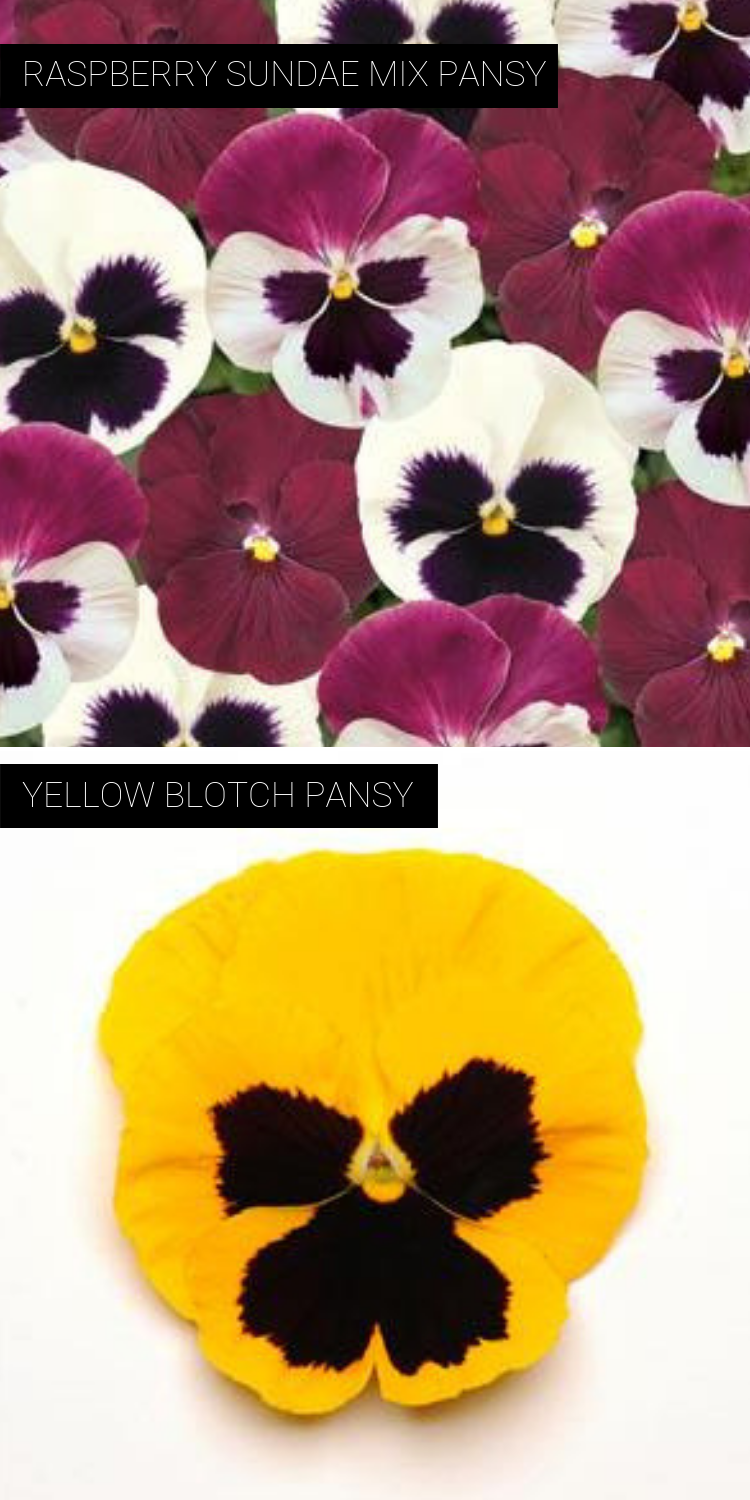After nearly a year of planning, the zoo’s horticulture team is ready to transform the zoo’s grounds for autumn! It’s important for us to plan ahead and coordinate with our plant providers well in advance to make sure that we’re able to get the variety and quantity of plants that we select. We source our plants from three outstanding local nurseries: Genuardi Gardens & Greenhouses in Norristown, The Rhoads Garden in North Wales, and Behmerwald Nursery in Schwenksville. Those plants will live both in containers and in the ground throughout the zoo this fall.

Pansies are a cool-weather flower and do a great job of filling in for our spent marigolds and petunias (They’re also edible! Add some flowers to your salad for a healthy dose of rutin, which strengthens capillary walls and helps prevent varicose veins). We’ve had three growing seasons to test and refine our pansy selection since the horticulture department’s inception in 2015. Certain cultivars thrive in the zoo’s environment more than others (your mileage may vary!). We’ve found that the solid yellow and orange varieties tend to fade quickly, while the Delta and Matrix have shown greater longevity. These are patented varieties of pansy that have been bred for large blooms, heat tolerance, a branching growth habit, and reliable color throughout the late summer and autumn. We’re especially fond of the Matrix Yellow Blotch because – appropriately enough – it resembles a jaguar’s spots. Our team is looking forward to trying the Matrix Raspberry Sundae Mixture for the first time this year. Regular deadheading will keep these plants looking tidy and promote blooming throughout the entire growing season. Just a few minutes a day is all you need to sustain happy, vibrant flowers. Pansies are capable of overwintering in the ground nicely. We’ve observed that more than 50% of the zoo’s pansies planted in the fall return the following spring, which saves us both time and money. For the best chance of survival, beds should be covered before storms to protect from heavy ice and snow. Regular mulch will do the job or, if you’re feeling festive, you can give your Christmas tree a second life: save its branches and keep them on hand for when you see a storm in the forecast.
Chrysanthemums, or mums, have plentiful long-lasting blooms and are perfect for providing color and drama to your garden through the late fall. They’re a major component of the zoo’s seasonal displays. Although they can be perennial in our hardiness zone if planted correctly (in the spring and in well-drained soil), we have no expectations for them to return next year. Many of the mums you may see in stores now have been indoors for their entire lives and are forced to bloom early. Therefore, they don’t have enough energy left over to grow roots and establish themselves before going dormant. Without a strong root system, plants cannot withstand the winter’s brutal freeze-thaw cycles and will be pushed out of the soil. This is called frost heaving and you can clearly see its effects on our pitiful Pennsylvania roads.
For our photo ops, we’ll include corn stalks donated by the Norristown Farm Park, hay bales, and purple millet grass. These will help fill in the displays and make the bright colors of the pumpkins and mums pop.
Our team is excited to create a brand new pollinator garden behind the scenes this fall. The zoo currently maintains two beehives which are not yet on exhibit, but their resident honey bees could frequently be found on our main path collecting nectar and pollen during the summer. Although they’re capable of traveling miles away from their hives, we’re happy to provide a reliable food source in their direct vicinity. Any well-planned garden will offer year-round visual interest. Similarly, an effective pollinator garden incorporates plants with staggered bloom times to ensure a steady supply of nectar and pollen throughout the spring, summer, and fall. Coral bells, coneflowers, goldenrod, and asters will help the bees to do their job of preparing honey to sustain the hive through the winter.
Written by Lindsay Friedenberg, EPZ horticulture staff

